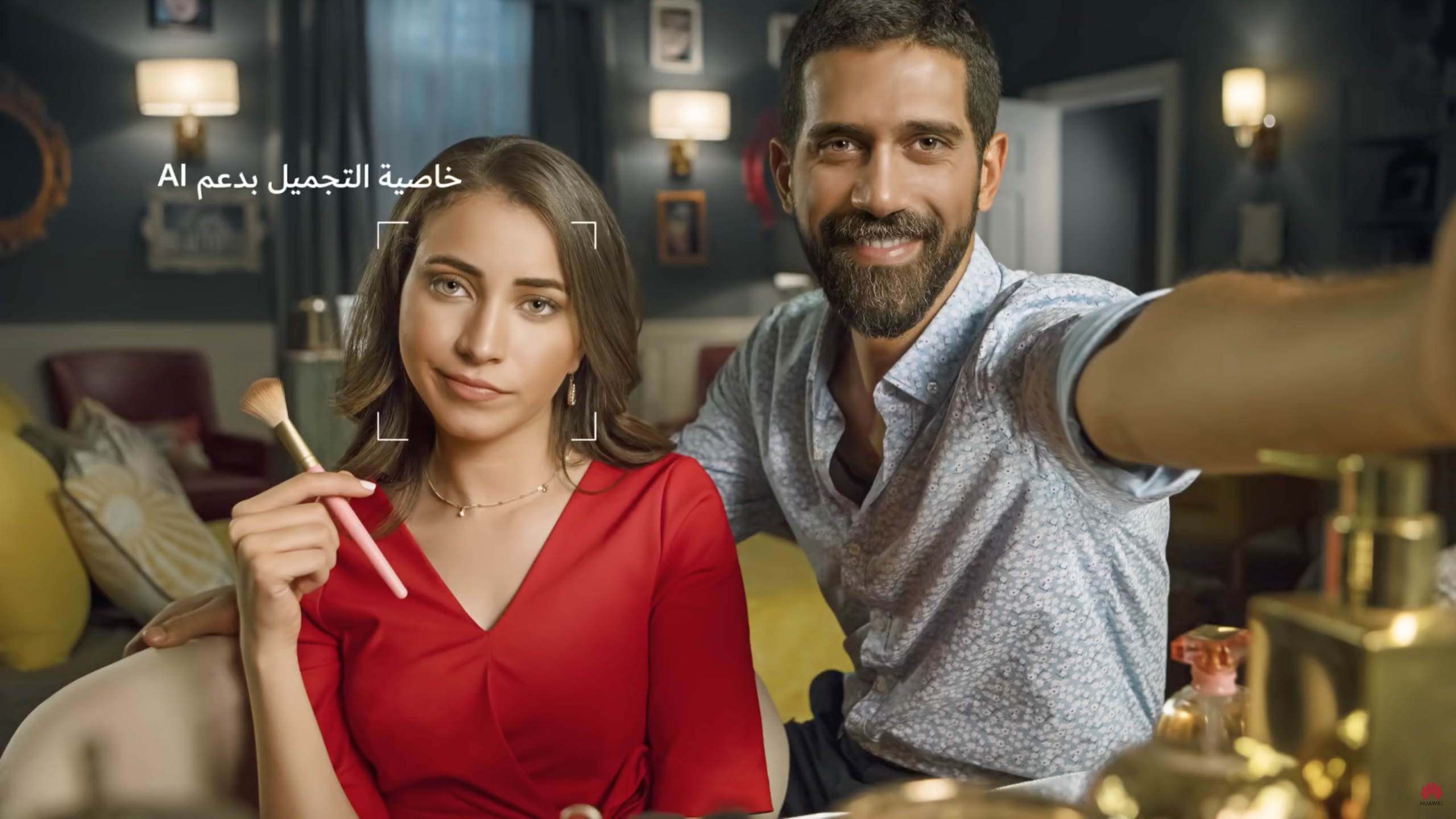Huawei has potentially breached consumer law and has "massively damaged" its brand by trying to pass off a professional DSLR photo as one taken by its newly released Nova 3 smartphone in a recent ad campaign, advertising professionals say.
The ad depicts a bickering couple who pause for a selfie, demonstrating that the woman featured needn’t fix her makeup because the camera's AI technology has it covered.
The actress featured, Sarah Elshamy, made the unfortunate decision of posting a behind the scenes shot on Instagram, featuring she and her male counterpart posing for a professional photographer using a tripod mounted DSLR.
The photo has since been deleted, but not before Reddit user AbdullahSab3 noticed the discrepancy.
Nathan Ruff, CEO of marketing agency HooZu, tells Information Age that being 'exposed' in this way has brought the Huawei campaign to everyone's attention for all the wrong reasons, “which is a shame as reviews state the camera phone is extremely high quality.”
“This will embarrass them, haunt them and ultimately impact their bottom line,” he said.
While many won’t be surprised to discover Huawei used a professional photographer to produce polished creative, Ruff says it still risks diminishing overall brand trust, essential in this age of social media.
Dee Madigan, Executive Creative Director of Campaign Edge, tells Information Age that one of Huawei’s main competitive advantages is its link to premium camera company, Leica, which it claims makes its smartphone camera superior.
“They've massively damaged one of their main brand advantages,” she says.
Madigan notes Huawei isn’t the only company to straddle the line between advertising and, well, BS; Mascara ads will never not feature false eyelashes, for example.
“It’s a fine line because we see it all the time - famous celebrities selling home hair dye when I know there is no way they are dyeing their hair out of a $12 box,” she says.
Were Huawei’s ad campaign filmed and featured in Australia, rather than the Middle East, it could potentially have opened itself up to criminal or civil penalties of $1 million or more, according to Australian Consumer Law.
A spokesperson for the ACCC told Information Age that businesses are prohibited from making false, misleading or deceptive claims about their products.
“Any claims a business makes about their products should provide consumers with clear, accurate and truthful information,” the spokesperson said.
“The overall impression given by the conduct or a particular claim will be considered in determining whether it is misleading.
"Any statement a business uses to represent its products or services should be true, accurate and able to be substantiated.
"The ACCC has developed guidance materials for businesses on honest advertising and selling practices under the Competition and Consumer Act 2010.”
The company seems to have created a loophole for itself, telling CNET that the disclaimer at the end of the video (written in barely visible Arabic) outlines that that content and images in the ad "are for reference only."
Huawei never specifically claims the picture was taken on the Nova 3, but seeing as how the entire ad is about the smartphone, it is certainly heavily implied.
This is not the first time Huawei has been caught trying to pass off DSLR photos as smartphone shots.
In 2016 it was caught using a photo captured on a Canon 5D Mark III DSLR and $2,100 lens as a ‘sample photo’ for the P9 smartphone.










